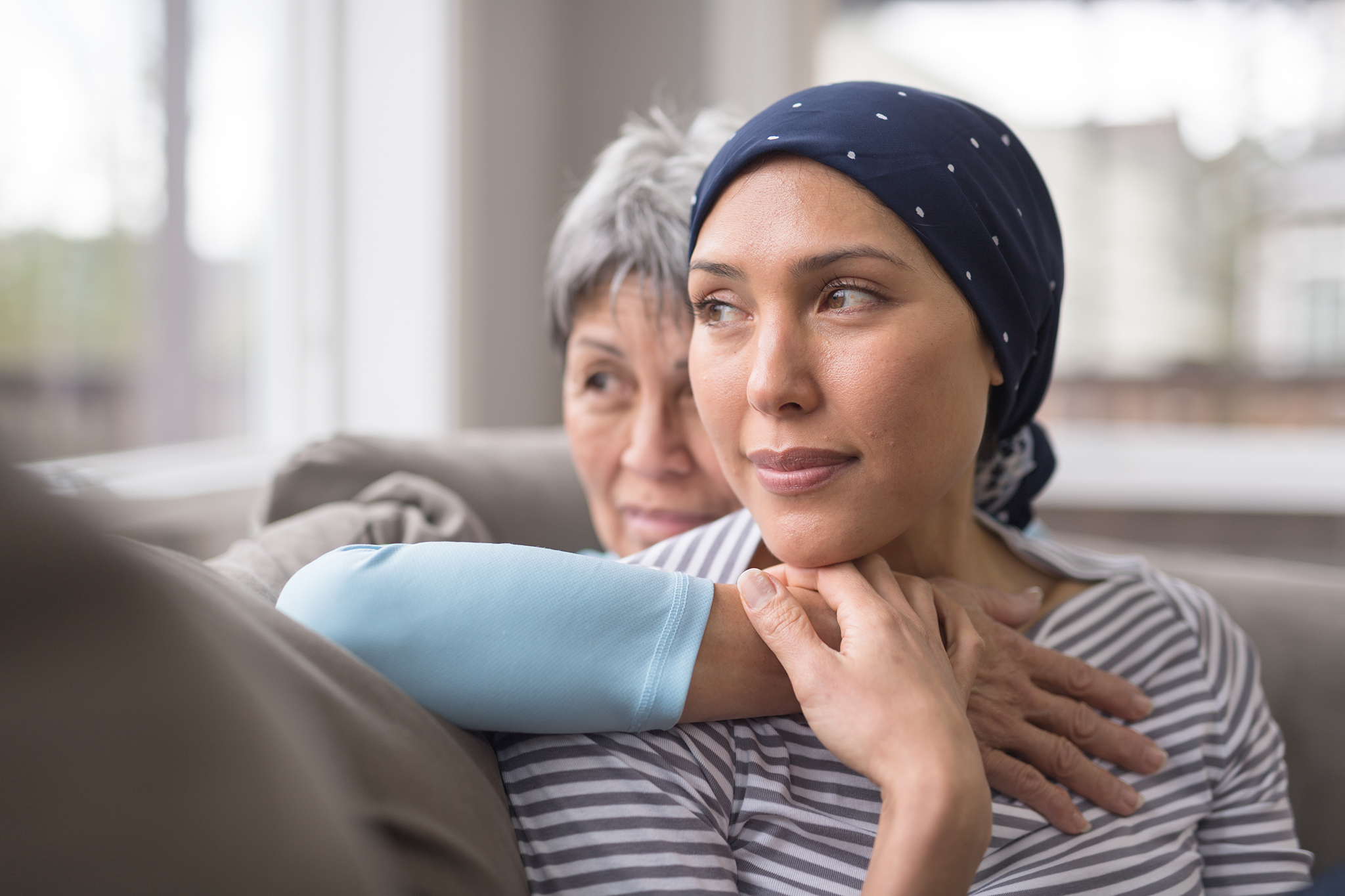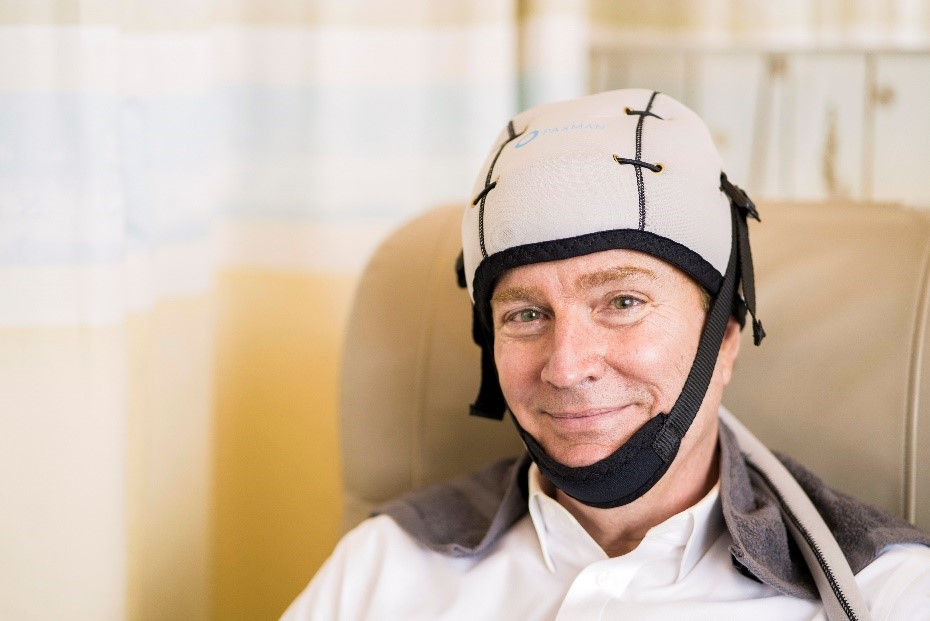- Patients
- Cancer treatments
- Chemotherapy and systemic anti cancer therapy
- Chemotherapy
- Chemotherapy side effects
- Paxman scalp cooling for chemotherapy

Paxman© scalp cooling for chemotherapy
Hair loss is often one of the most common side effects of chemotherapy. Paxman scalp cooling can help reduce hair loss during treatment.
What is Paxman scalp cooling?
The Paxman scalp cooling system uses a specialised cooling technique and a silicone scalp cooling cap to help reduce the blood flow to the hair follicles. The cooling causes your blood vessels to constrict (vasoconstriction). Cooling your blood vessels reduces the amount of chemotherapy reaching your hair follicles. This helps to reduce hair loss during treatment.
Contact us
If you have any questions about hair loss, chemotherapy, or the Paxman cooling cap, contact us today. We’re here to help.
What happens during my chemotherapy session?
Once your consultant has approved you for scalp cooling, the process will involve placing a silicone cooling cap onto your head approximately 30 minutes before each treatment session.
After ensuring a good fit, the cap will slowly reduce the temperature of your scalp to between 18° and 22°C. This is the ideal temperature needed to achieve the best results.
The cooling cap will remain in position during the treatment session and for up to 90 minutes afterwards. We’ll repeat this during each chemotherapy session.
You might find the cold sensation a bit intense during the first 15 minutes of the session, but it becomes easier as time goes on.
However, to help minimise the intensity, you should take paracetamol one hour before your treatment and wear warm clothes to each session.

Paxman scalp cooling might not be available if you:
- Have a blood cancer (such as leukaemia, lymphoma, or myeloma)
- Have a medical condition resulting in a high sensitivity to cold
- Need continuous chemotherapy over the course of several days
- Have a medical condition where you liver health is affected
Your consultant will discuss your options with you.
What can I expect during treatment?
After starting your chemotherapy, your hair will likely begin to fall out between two and four weeks later. This typically starts with your head hair, followed by the hair from other areas of your body.
How your hair falls out tends to vary from person to person – some people lose all their hair in clumps very quickly, while others only encounter a very mild thinning over a gradual period.
Over the first few weeks of your cancer treatment, you might start noticing hair accumulating on your pillow, in your hairbrush, down the shower drain or in your sink.
This may make you feel distressed and upset, your scalp may also feel tender to touch. It’s important to remember that these feelings are perfectly normal and are an extremely common side effect of chemotherapy.
Why does chemotherapy cause hair loss?
Chemotherapy drugs are powerful medications that target all rapidly dividing cells in the body, including cancer cells.
The cells in the root of your hair are the second fastest dividing cell in the body. These cells are also attacked and is why many chemotherapy drugs tend to result in hair loss.
Not all chemotherapy drugs cause hair loss though. Your potential risk of alopecia will vary depending on the treatment you receive and the dose you’re prescribed. Your consultant will talk you through the side effects of your chemotherapy drug and what to expect during treatment.
If you do experience hair loss, the results will often be temporary. And once you have finished your treatment, your hair should start to grow back in approximately three to six months.
Can I minimise hair loss during chemotherapy?
There are steps you can take to help look after your hair and help minimise hair loss. No matter your hair type, the key thing is to be kind and gentle to your hair. Here are some other tips to help you care for your hair.
- Wash your hair less than you normally would, you can use dry shampoo to help between washes
- Swap your shampoo and conditioner for one that is colour, perfume and sulphate free
- When washing your hair, smooth your shampoo and conditioner into your hair
- Avoid rubbing your hair and scalp
- Gently brush your hair every day
- Try to avoid using heat on your hair, like hair straighteners and hair dryers
Contact us today
If you have other questions about hair loss, chemotherapy, or the Paxman cooling cap, contact us today. We’re here to help.